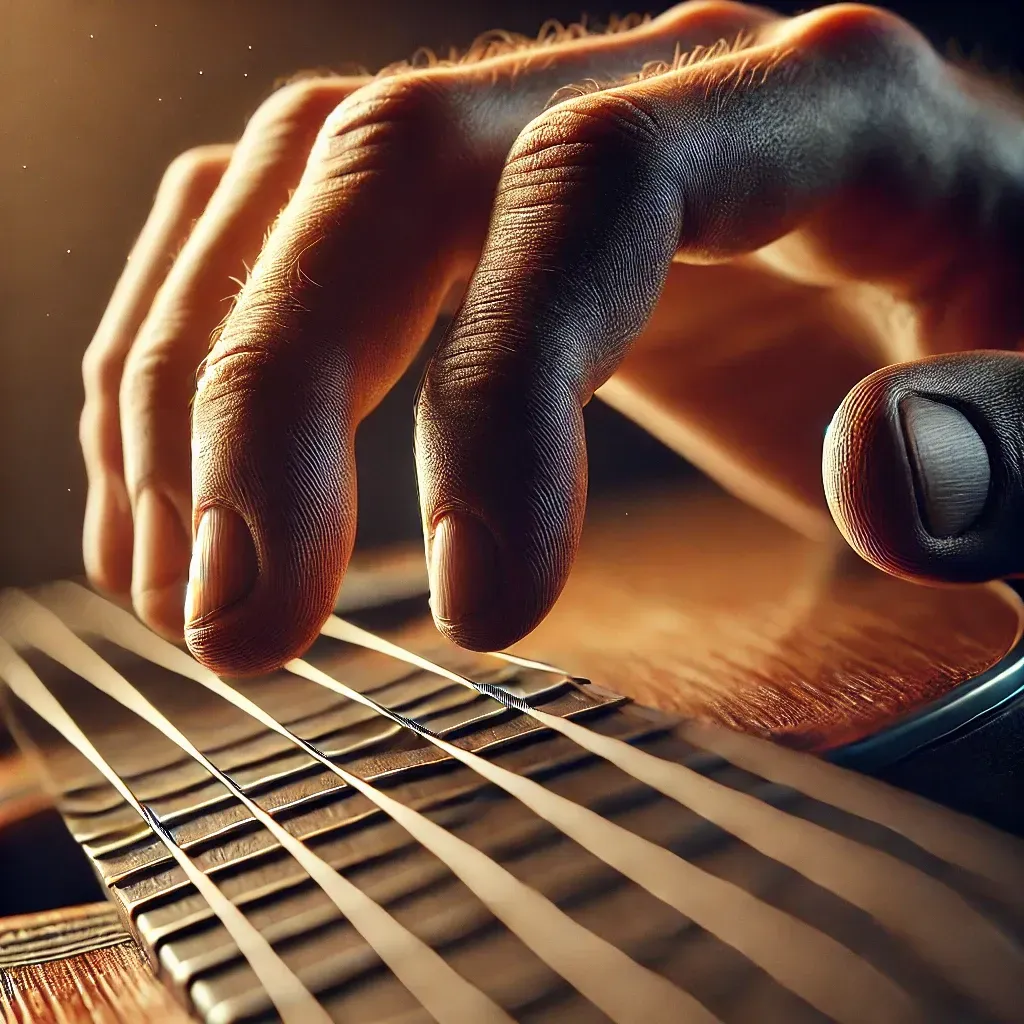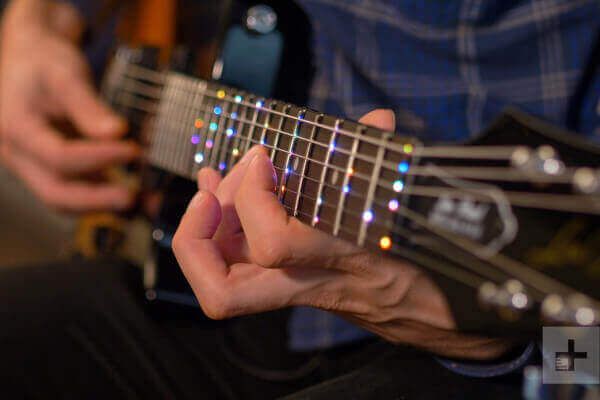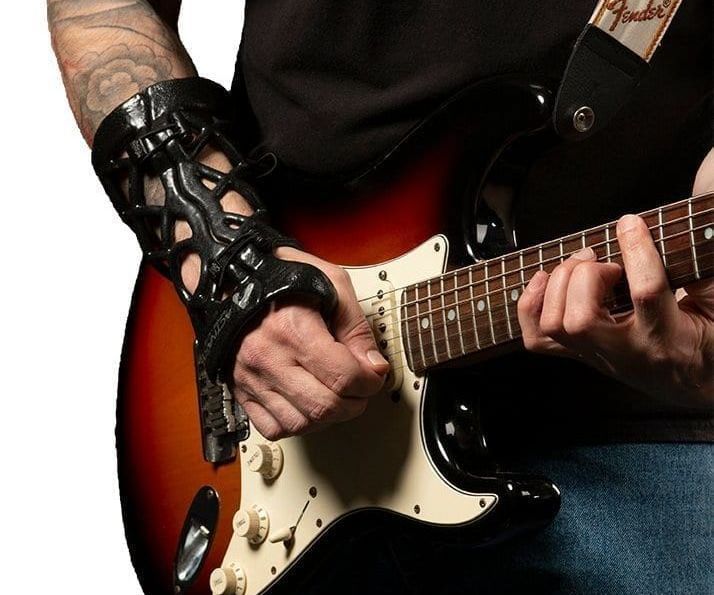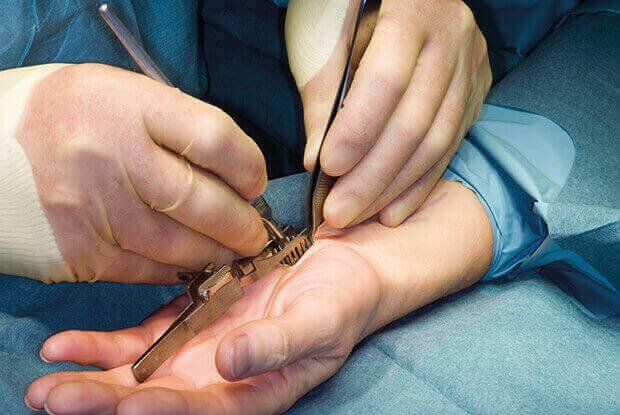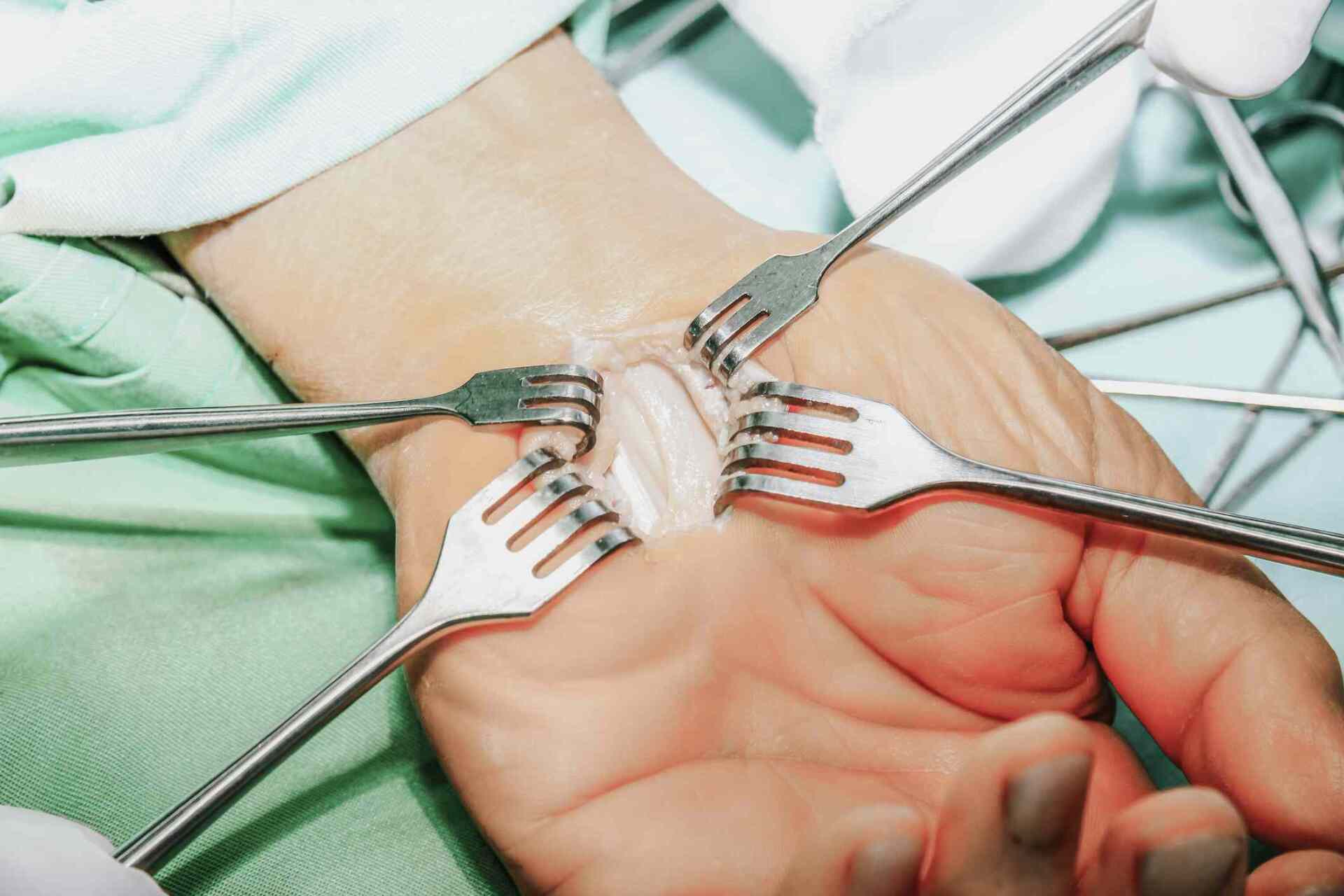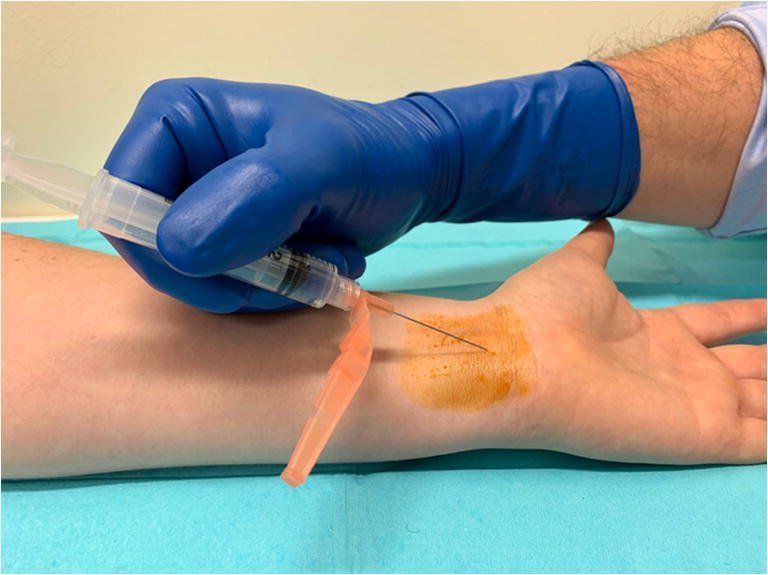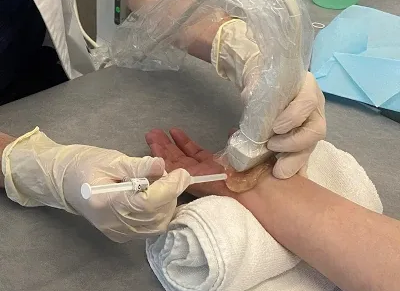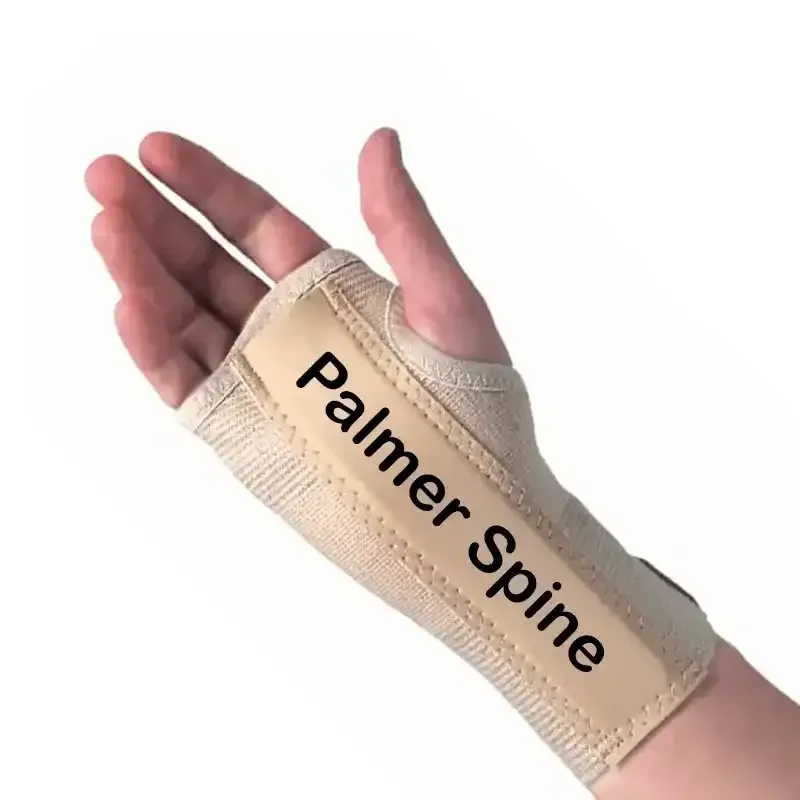Carpal Tunnel From Guitar Playing
Table of Contents
- Key Takeaways
- Why Guitarists Get Carpal Tunnel
- How It Develops in the Wrist
- Fretting vs. Picking Hand Stress
- Fretting Hand
- Picking Hand
- The Guitar is the Ultimate Carpal Tunnel Maker
- Stages of Carpal Tunnel Syndrome
- How Common Is Carpal Tunnel in Guitar Players?
- Treatment Options for Guitarists
- Surgical
- Non-Surgical
- Summary
- FAQs
- Sources
- About
Carpal tunnel from guitar
playing happens when repetitive finger and wrist movements compress the median nerve in your wrist. This causes numbness, pain, and weakness in the hand. Early treatment—like rest, night bracing, stretching, and myofascial massage—can stop symptoms before they become severe.
Key Takeaways
- Repetitive guitar motion can inflame tendons and compress the median nerve, causing carpal tunnel symptoms.
- Early intervention with non-surgical care often reverses the condition completely.
- Night bracing, stretching, and myofascial release are the most effective long-term remedies.
- The
CarpalRx device
provides the same myofascial benefits as a therapist—conveniently and affordably at home.
Why Guitarists Get Carpal Tunnel
Getting carpal tunnel from guitar playing is more common than most musicians realize. Hours of
rapid finger and wrist motion strain the hand’s flexor tendons—the cords that help you grip and pluck strings. Over time, this repetitive stress inflames tissues inside the wrist and compresses the median nerve, leading to pain, numbness, and tingling.
Any activity that demands constant finger motion can trigger this painful condition. Other professions share similar risk factors, including
graphic
artists, golfers,
video gamers,
hair stylists, carpenters,
fine artists, sonographers,
transcriptionists, typists, and
dental hygienists. Most often, the result of this high risk activity is
carpal tunnel syndrome.
How it Develops in the Wrist
Fretting vs Picking Hand Stress
Symptoms of carpal tunnel can happen on either hand, and for different reasons. But when it comes to guitar playing, we can boil the reasons down to particular hand and finger motions.
Fretting hand
The fretting hand endures intense stress from holding chords and bending strings. Your thumb and fingers curl tightly, forcing tendons into awkward positions. Holding that posture while performing quick movements can easily trigger inflammation and nerve compression.
Picking hand
The picking or plucking hand moves rapidly, often at extreme speeds. Constant wrist motion and finger contraction create strain on the tendons. Although the wrist may appear relaxed, internal stress builds quickly—especially during long sessions or fast solos.
The Guitar is the Ultimate Carpal Tunnel Maker
Knowing the above facts, there's no mystery about how you acquire carpal tunnel from guitar playing. Extreme forces on the tendons produce stresses and strains that are unnatural. You can see why I tell my guitar playing patients...
"The perfect device to CAUSE carpal tunnel is the guitar." - Dr. Zannakis
Stages of Carpal Tunnel Syndrome
Carpal tunnel typically progresses through three stages:
1. Mild Stage
Early symptoms like tingling and numbness may appear only after playing or at night. Many say they have to wake up and shake out a numb hand or rub out painful fingers. There's usually a "stress delay" when the symptoms appear, meaning you might not feel symptoms immediately after playing, but after a few hours. About half of the time, rest and night bracing can
reverse
symptoms at this stage.
2. Moderate Stage
Pain or numbness become constant, and hand weakness or clumsiness sets in. Many guitarists struggle to grip or fret accurately and may seek medical help here. Sometimes
shooting electric shocks occur when trying to grasp objects. The hand and fingers lose 20-50% of their strength. Loss of finger speed and dexterity is ever-present. as is loss of fine touch sensation in your fingertips.
3. Severe Stage
Pain or numbness become relentless. In the
severe stage numbness or pain is constant, unrelenting, and almost intolerable. Fingers weaken drastically, and many patients lose the feelings of hot and cold sensations in their fingertips. The thumb muscle noticeably flattens out and degenerates. Hand function may never fully recover without treatment.
Without treatment, the majority of patients go from the mild stage to the severe within 9 months.
Almost 80% will have symptoms on the opposite hand as well (called
bilateral carpal tunnel syndrome).
How Common is Carpal Tunnel in Guitar Players?
Guitarists are among the highest-risk musicians for carpal tunnel syndrome. Many hand specialists agree that a large percentage of their carpal tunnel patients are guitar players—followed closely by pianists. The reason is simple: few activities demand as much constant, precise, and repetitive motion from the hands.
Although large-scale studies are limited, research shows that
musculoskeletal overuse disorders affect 26% to 93% of all musicians—a staggering range that highlights just how vulnerable performing artists are (1).
In one clinical study focused on guitar players,
75% experienced some form of overuse injury, including carpal tunnel syndrome (2). Breaking it down further:
- 62.5% of classical guitarists were affected
- 87.5% of flamenco guitarists developed overuse symptoms
Even more concerning, the ability to play declined dramatically among those affected:
- 50% of classical guitarists
reported reduced playing ability
- 82% of flamenco guitarists could no longer perform at their previous level
These numbers make one thing clear: carpal tunnel from guitar playing is the leading cause of performance-limiting hand pain among musicians.
Treatment Options for Guitarists
Most people don’t realize how serious carpal tunnel syndrome actually is. Half-hearted measures can waste valuable time as the disorder progresses towards the severe stage.
If you suspect
carpal tunnel from guitar, act early. Waiting too long lets inflammation progress to nerve damage. Treatments fall into two categories:
- Surgical – Carpal tunnel release surgery cuts the ligament to relieve pressure on the median nerve. While somewhat effective, it carries risks and requires long recovery times. This is why the
American Academy of Orthopedic Surgeons recommends surgery as the last treatment option.
- Non-Surgical – Preferred by most musicians, these options reduce swelling and restore circulation naturally. Often, a combination of non-surgical therapies (like night bracing, stretching exercises, and massage) work as well or better than surgery.
Surgical
Non-Surgical
Most musicians prefer
non-surgical remedies because they’re effective, less invasive, and allow for faster recovery. When started early, these approaches can stop carpal tunnel symptoms from progressing and even reverse them.
Non-surgical treatment of carpal tunnel syndrome is generally effective and lasting. The more severe the condition, the more extensive any treatment is required. The most often used non-surgical treatments are:
- Drugs
- Steroid shots
- Hydrodissection
- Night bracing
- Stretching exercises
- Myofascial massage
For
moderate
or
severe symptoms, it’s best to use a combination of the above treatments concurrently.
1. Drug Therapy
2. Steroid Shots
3. Hydrodissection
4. Night bracing
5. Stretching Exercises
6. Myofascial Massage
Summary
Developing
carpal tunnel from guitar playing is extremely common—and entirely preventable when caught early. The rapid, repetitive movements that make great music can also stress the hand’s tendons and compress the median nerve inside the wrist. Over time, that pressure causes pain, tingling, weakness, and loss of dexterity.
The good news is that
most cases don’t require surgery. Non-surgical treatments such as
rest, night bracing, stretching, myofascial release massage, and hydrodissection
can successfully relieve symptoms and restore normal hand function.
For many musicians, the
CarpalRx
offers an ideal at-home solution—delivering professional myofascial release therapy automatically, without the expense or inconvenience of daily office visits. Early, consistent treatment gives you the best chance to keep playing pain-free for years to come.
FAQs
- Playing guitar is my profession and career. I cannot just quit. So what can be done?
Before considering surgery, you should take the advice of the American Academy of Orthopedic Surgeons. That is, try all nonsurgical alternative remedies first, before discussing surgery. These include stretching exercises, night bracing, and myofascial release massage. You can also try steroid injections and hydrodissection.
- How can I get rid of the pain and numbness but still play guitar?
You can try the nonsurgical alternatives listed above and
discussed here. Most of these nonsurgical remedies require that you rest your hand. That means taking a break from playing. At the very least, you should cut cut down on your playing time. And if yo
must
play, take frequent rest breaks to do stretching exercises.
- Is surgery my best option?
Talk with your hand specialist. A significant number of patients who undergo carpal tunnel release surgery see a diminished hand function. Your doctor will likely advise that you use all nonsurgical remedies first, like stretching, night bracing, and
myofascial release massage.
About


